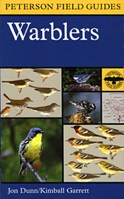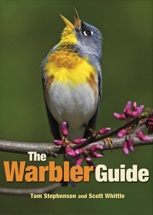A practical guide to bird watching in Sonoma County, California
(Unless otherwise indicated, all phone numbers are in the 707 area code)
A practical guide to bird watching in Sonoma County, California
(Unless otherwise indicated, all phone numbers are in the 707 area code)


© Colin Talcroft, 2009, 2010, 2011, 2012, 2013, 2014. All rights reserved.
Unless noted, all photos by the author. If you would like to use one of my images, please ask for permission for non-commercial use with proper credit or commercial use with proper compensation.
Area-specific bird books
The standard field guides to Western birds and birds of North America (Peterson, Sibley, National Geographic, etc.) will cover all the species normally present in Sonoma County--and many more birds that don't occur here--but there are a number of more specialized books available--such as those listed here.
The best local sources of bird books may be Wild Birds Unlimited, at 71 Brookwood Avenue, Santa Rosa, CA 95404 (576-0861) and Copperfield's Books (stores in Healdsburg, Petaluma, Santa Rosa, and Sebastopol).
Also see BIRD BOOK REVIEWS
• Birds of Sonoma County California: An Annotated Checklist and Birding Gazeteer
(Revised and updated 2000)
By Gordon L. Bolander and Benjamin D. Parmeter
Redwood Regional Ornithological Society, 2001
Although the sightings are a bit old now and some of the dates for earliest arrivals and latest departures of migrating birds are out of date, this remains an excellent resource. Bar graphs allow you to see at a glance how common or uncommon a bird is in the county and what time of year you're likely to see it. Many historical sightings are included, which gives a sense of how populations have changed. Highly recommended for local birders. Intended as a reference book, not a field guide. (The current printing has a dark blue-green cover.)

• Birds of Northern California
By David Fix and Andy Bezener
Lone Pine Publishing, 2000
A very popular guide to the local birds--although not specifically Sonoma County birds. Big, clear, attractive illustrations (although the coloration in the drawings is a bit idiosyncratic in some instances). Has the advantage of not including birds that rarely occur in the area, unlike the full Western field guides, which makes it a good guide for beginners or people new to the area. Often includes incidental information of interest, such as explanations of latin names.

• Birds of Napa County
By Hermann Heinzel
Heyday Books, 2006
Although this is a guide to the birds of neighboring Napa County, there is a great deal of overlap--the birds don't pay attention to county lines. Another very popular guide to the local birds, especially among new birders. Like the guide above, it has the advantage of keeping things simple, by not including birds unlikely to occur in the area. The tall skinny format can be a trifle awkward, but easy to carry in the field.

•An Introduction to Northern California Birds
By Herbert Clarke
Mountain Press Publishing, 1995
Supposedly a guide to birds of Northern California, but covers 202 species found from the California border with Oregon to as far south as Santa Barbara County and east to the Nevada border--which is most of the state. The book approaches birds from the perspective of habitat, presenting groups of species likely to be found in similar habitat. Chapters have titles such as "Birds of Cities and Towns" and "Birds of the Coast and Nearby Ocean." Illustrated with mostly clear, representative photographs. Descriptions are brief, focused on occurrence and behavior rather than on identification. Useful for beginners or people with a casual interest in local birds.
•Birding Northern California (Falcon Guide Series)
By John Kemper
Falcon, 1999
A field guide to the birds of all of northern California with information about birding hotspots, but there is comparatively little about Sonoma County. Only Bodega Bay and Annadel State Park are covered. Frankly, there's more useful information on this website. Not a bad book if you plan a trip ranging throughout the entire northern part of the state of California, although you can carry only so many books when traveling....
•Birder's Guide to Northern California
By Lolo and Jim Westrich
Gulf Publishing, 1991
I have not seen this book personally, so cannot comment, but it has received rather poor reviews on Amazon. Perhaps best avoided? Reviewers complain of bad directions and a general vagueness of information.




• Sonoma County Breeding Bird Atlas
Edited by Betty Burridge
The Madrone Audubon Society, 1995
This is a reference book, not a field guide, but if you have a serious interest in the birds of the county, the Breeding Bird Atlas is a comprehensive look at the geographical distribution of birds known or believed to breed in Sonoma County. Includes species descriptions and information about various habitats in the county. Apparently out of print, but I managed to purchase a new copy in early 2011. There are probably copies in local libraries. Somewhat out of date now, but a new edition, scheduled for completion around 2015, is currently in preparation.
Other useful books
•Gulls of the Americas
By Steve N. G. Howell and Jon Dunn
Peterson Reference Guides, 2007
If you really want to learn the gulls, there's probably no better book than this. The organization could be clearer, in my view, but just about everything you need to know about gulls is here. Covers all species present in North America. Numerous photos of adult birds, juveniles, and birds in stages between with detailed notes on the photos as well as extensive species descriptions in the text. The authors are Bay Area residents. Many of the photos were taken locally, at Lucchesi Park, in Petaluma.


•Advanced Birding
By Kenn Kaufman
Peterson Field Guides, 1990
This book is full of useful tips that will help make even experienced birders better birders. Discusses such topics as ways of observing birds, identification strategies, and feather topography, but most of the book is occupied by a collection of essays addressing particular identification problems--for example, distinguishing winter loons, Clark's/Western Grebe, distinguishing the accipiters, sorting out the small sandpipers, distinguishing the dowitchers, etc.

•The Birder's Handbook: A field Guide to the Natural History of North American Birds
By Paul R. Ehrlich, David S. Dobkin, and Darryl Wheye
Fireside (a division of Simon & Schuster), 1988
The Handbook bills itself as "the essential companion to your identification guide," and that seems a good description. Covers all birds known to breed north of the US/Mexico border. Contains a wealth of information for which field guides generally have no room--discusses breeding habits, egg numbers and colors, breeding displays, diet, and other topics. Includes many additional essays of interest on just about any bird-related topic you can think of. Excellent rainy day reading when you need a fix but can't go out to bird.
•Field Guide to Advanced Birding
By Kenn Kaufman
Houghton Mifflin Harcourt, 2011
The second edition of the book above. Published in April 2011. Greatly expanded. Subtitled "Understanding What You See and Hear," this edition puts a much greater emphasis on modes of thought and observation that promote good birding skills rather than on particular identification problems, although these, too, are covered. Discusses many more species than the original publication. Recommended.

•A Field Guide to Warblers of North America
By Jon Dunn and Kimball Garrett
Peterson Field Guides, 1997
Long the best comprehensive look at the North American wood warblers. General information about warblers of North America, detailed species accounts, range maps and a plate for each species showing the full range of plumage variations by sex, age, and subspecies. Has an unusual and useful plate comparing the vent and tail areas of all the North American warblers as seen from below. Still extremely useful, but may have been superseded by The Warbler Guide (see above)


• Birds of Sonoma County California: An Annotated Checklist (Updated 2000-2010)
By Benjamin D. Parmeter and Alan N. Wight
Redwood Regional Ornithological Society, 2012
A supplement to the above book. Attempts to bring sightings up to date through 2010. Unfortunately, it lacks the basic reference material and very useful charts showing frequency and timing of occurrence that appear in the original publication. As a result, this is really useful only if you own the above book as well. The inexplicable lack of an index is annoying and many known sightings have failed to make it into these pages. Despite the needless inefficiency caused by the omission of an index and the highly selective nature of the new records included, a useful update to local birding reference material.

• Bay Area Birds: From Sonoma County to Monterey Bay
By David Lukas
Lukas Guides, Big Oak Flat, CA, 2012
Covers 320 species that live in the San Francisco Bay area or pass through during migration, 221 of these in detail, with essays on life history and range. Gives much useful information about when and where you're likely to see the birds you're most likely to encounter in the area. No illustrations--which means this book may be appreciated more by experienced birders that already know what they're looking at. Although the book is the size of a small field guide, it is not intended as an identification guide. Useful as supplementary information. (If you're heading into the mountains, look also for Lukas's Sierra Nevada Birds.)

•The Warbler Guide
By Tom Stephenson and Scott Whitttle
Princeton University Press, 2013
An entirely new approach to identifying the wood warblers. Authors Stephenson and Whittle work on the assumption that most of the time we are trying to identify difficult warblers based on fleeting, partial views or on auditory information. The book uses “quick finders” to facilitate an initial guess about an unknown bird. Species entries are illustrated with numerous photographs at all angles. Species entry are surrounded by data for species most likely to be correct if the user’s initial hypothesis is incorrect. The book makes heavy use of sonograms as well, also arranged so that similar species information surrounds the information in each main entry.

•Rare Birds of North America
By Steve N. G. Howell, Ian Lewington, Will Russell (illus.)
Princeton University Press, 2014
A comprehensive guide to vagrants that have been recorded in North America through 2011-2012. Beautifully illustrated with 275 color plates. Covers 262 species normally not at home in North America--birds that have strayed here from Eurasia, the New World tropics, and the oceans of the world. There is much useful discussion of why vagrants end up where they do, which much information about migration patterns and how normal bird movements relate to vagrancy. Detailed species accounts emphasize field identification.